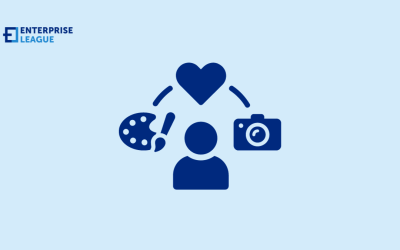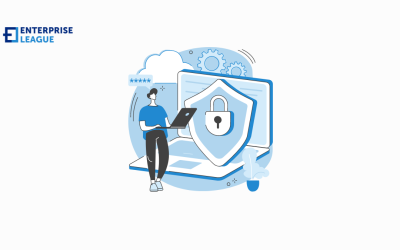Today, it is essential to keep your devices and websites far away from the eyes of attackers, but this isn’t an easy task because the danger is everywhere. You can fall victim to these attacks as soon as you turn on your device.
Bot or DDoS (Distributed Denial-of-Service) are attacks that flood your server with traffic, so you cannot access the site or page you want. Such attacks can target websites, individual devices, servers, etc.
This attack may be challenging to identify, which is another reason you must protect your devices and websites. The attacks don’t seem unusual initially (internet connection problems, trouble loading the sites), but they can be very harmful.
You might want to consider adding another layer of protection to your devices, and we will teach you how to do that.
4 ways for protecting your websites and devices
Creative ways you can ensure protection for your devices and websites.
Network security
Getting a more secure network is one of the first steps you can take to protect your device or website from attackers, and there are many possible solutions you can choose from, such as VPNs, proxies, antiviruses, and more.
For example, network segmentation can prevent DDoS attacks by “filtering” your information and creating subcategories with more robust security and protection. That way, it would take a lot more time to access your data, and you will be able to recognize an attack before the attacker steals your data.
Another great way of adding a layer of security to your devices is using a Virtual Private Network. A VPN for PC can protect your computer from being flooded with bogus traffic. Such attacks target devices according to their IP addresses. Since a VPN program masks your actual IP address, the attacks do not cause harm to your device. Instead, VPN servers absorb the damage, leaving your computer intact.
Response plan
Response plans can be helpful if you are a business owner and want your employees to understand all the dangers lurking online. Additionally, you can create a response plan for yourself, so you won’t have to panic if you get attacked – you will know what to do in this case.
This plan can consist of a step-by-step guide on reacting to and stopping an attack immediately. A response plan depends on the purpose, as previously mentioned. If it is a plan for your employees, it needs to be more detailed, and every employee should have a copy of it.
If you are creating a plan for yourself, you don’t have to worry about the formalities, but you should focus on the technical properties of your plan. This plan should contain all the relevant information – who to call if there is an attack, what to do, etc.
Recognize an attack
Recognizing an attack may be difficult, but the sooner you realize it, the better the outcome. Sometimes, an attack can last for a couple of minutes, and other times it can last for hours.
However, the most important things to keep in mind are the performance issues of the device or site. The site or the device may crash, or it may work slowly and poorly. You won’t be able to access any other sites for some time, or the process will be slow if you can do so. For instance, there are warning signs of DDoS attacks on PCs or other devices that you can identify and take action as soon as possible.
Some attacks can start as low-traffic ones, so identifying them will be even more difficult. However, if you see any unusual performance issues or other abnormalities, you should take that as a warning sign.
Continuous monitoring
Another way to keep your devices and websites safe is using CM (Continuous Monitoring). This tool allows you to keep track of the traffic at any moment and notice attacks before they have a chance to harm your site or device.
This tool can help you identify any unusual behavior, so you will be able to react immediately. Business owners should always use CM because they have more devices to take care of, but it is also a good prevention tool for private users.
You can always check whether your site is working correctly and the traffic is at the usual level. You can react before it is too late if there are any abnormalities.
Conclusion
DDoS attacks have become a common occurrence, but they can be very harmful to your device or your site. Because of this, you should protect your devices and sites before an attack occurs.
You can do a couple of things to level up your security.
Firstly, you should ensure your network is safe, and you can do that by using various software (VPN, antiviruses, etc.). You can also create a plan in case of an attack so that everyone will know what to do in an emergency.
Another big thing to be aware of is what a DDoS attack looks like, and you can use a CM tool to keep track of the traffic.
More must-read stories from Enterprise League:
- Guide to successful B2B marketing in 2022.
- Learn how to build an effective CRM strategy for your business.
- How successful businesses can give back to the community.
- Engaging virtual networking events that you should not miss.
- Foretelling: transform your business by predicting future trends.
Related Articles
How to turn your hobby into a business in 2024
How long have you been dreaming to turn a hobby into a business and swim in cash? Stop dreaming, read our article and take action.
Home office security: 10 cybersecurity tips for remote workers
Working from home has become a reality and there are new challenges associated with remote work and maintaining the security of sensitive information.
6 supply chain challenges and how to solve them
When your business works with physical products it won’t be long until certain supply chain challenges arise. Knowing how to deal with these supply chain issues is crucial.
How to turn your hobby into a business in 2024
How long have you been dreaming to turn a hobby into a business and swim in cash? Stop dreaming, read our article and take action.
Home office security: 10 cybersecurity tips for remote workers
Working from home has become a reality and there are new challenges associated with remote work and maintaining the security of sensitive information.





